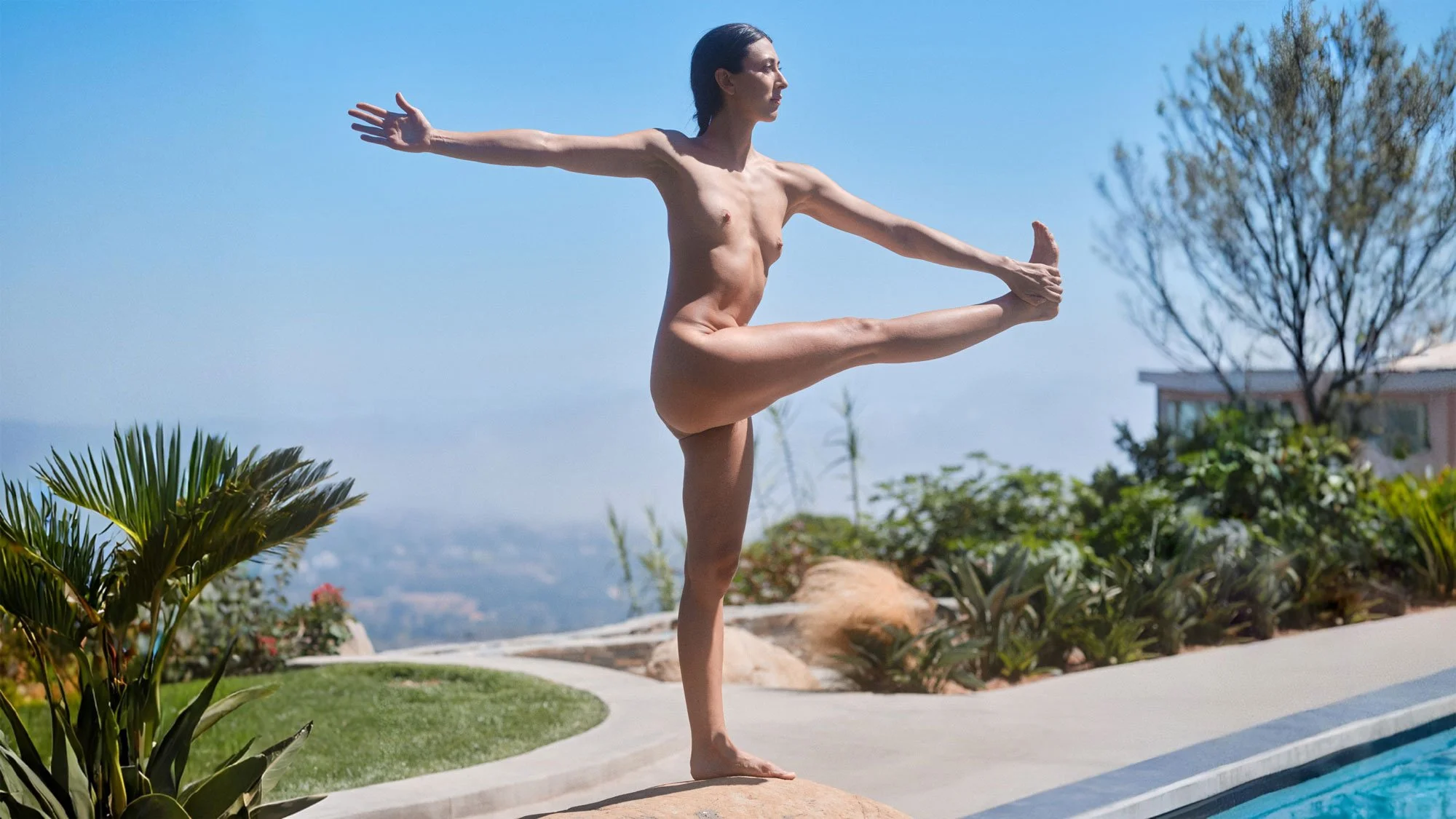Sun Salutation B
Surya Namaskar B
Sun Salutation B aka Surya Namaskar B is an intermediate sequence of 19 traditional yoga postures that open the heart and invigorate the entire body.
Common Name: Sun Salutation B
Sanskrit Name: Surya Namaskar B (SOOR-yuh nah-muh-SKAR-uh B)
Level: Intermediate
Pose Type: Sun Salutation
Target Areas: Quads, Hamstrings, Biceps, Triceps, Chest, Back, Core, Glutes
Surya Namaskar, also known as Sun Salutations, are sequences of yoga postures that flow seamlessly together from one asana to the next, linking each movement to the breath. They are ideally practiced at the beginning of the day to welcome the sun, at sunset to bid the sun farewell, or any time of day as excellent standalone exercises. The most popular Sun Salutations are the foundational A, B, and C sequences. Today’s tutorial will show you how to do Sun Salutation B, arguably the most difficult of the three.
Sun Salutation B Steps
Step 1
Begin in Tadasana, Mountain Pose at the top of your mat. Bring your big toes to touch. Stand up tall, arms hanging heavy by your sides. Start to bring your awareness to your breath. Try to maintain this awareness as your flow through each posture, linking each movement to an inhale or exhale.
Step 2
Utkatasana, Chair Pose. On an inhale, bend your knees and sweep your arms up towards the sky. Look up. Keeping a long, straight spine, lower your hips back as if you’re about to sit down on a chair behind you. Roll your shoulders back and tuck your tailbone slightly.
Step 3
Exhale, fold forward, Uttanasana. If your hamstrings are tight, you can keep a bend in your knees. Allow your head to drop down, relaxing your neck.
Step 4
Halfway lift, Ardha Uttanasana. Inhale, place your hands on the ground, your ankles, your shins, or your thighs depending on your flexibility. Straighten your arms and flatten your spine, rolling your shoulders back.
Step 5
Exhale, step back into a high plank and lower down to Four Limbed Staff Pose, aka Chaturanga Dandasana.
Step 6
Inhale, scoop your chin and your chest forward and up to Upward Facing Dog, aka Urdhva Mukha Svanasana. Draw your shoulders back, look up.
Step 7
Exhale, lift your hips up and back to Downward Facing Dog, aka Adho Mukha Svanasana. Continue drawing your hips up and back as you keep a long, straight spine. If your hamstrings are tight, you can come up onto your tiptoes and bend your knees.
Step 8
Warrior 1, Virabhadrasana I. Inhale, step your right foot between your hands. Plant your left heel down and pivot your left towards forward at a 45 degree angle, square your hips with the top of your mat, and bend deeply into your front leg. Reach your arms up towards the sky, palms facing each other. Roll your shoulders back, opening the chest.
Step 9
Exhale, Chaturanga Dandasana. Plant your hands down on the mat and step back into a high plank. Lower down, keeping your elbows close to your ribcage as you lower.
Step 10
Inhale, Upward Dog.
Step 11
Exhale, Downward Dog.
Step 12
Warrior 1. Inhale, step your left foot between your hands. Plant your right heel down and pivot the right toes forward. Square your hips towards the top of your mat and bend into your left leg. Reach your arms up towards the sky. Draw the shoulders back and down away from the ears.
Step 13
Exhale, Chaturanga Dandasana. Lower down, elbows close to your ribcage.
Step 14
Inhale, Upward Dog.
Step 15
Exhale, Downward Dog.
Step 16
Take a few steps to the top of your mat. Inhale, halfway lift as you come up.
Step 17
Exhale, forward fold.
Step 18
Inhale, Utkatasana, Chair Pose.
Step 19
Exhale, straighten the legs and release the arms down, coming back into Tadasana, Mountain Pose.
Modifications
As you are building strength and mastering this sequence, you can limit how deeply you bend into Chair Pose and Warrior 1. Only come down as far as you can while also keeping your hips squared and tailbone slightly tucked.
If your hamstrings are tight, you can keep your knees bent in the Forward Folds, Halfway Lifts, and Downward Facing Dogs.
If you are finding Chaturanga Dandasana difficult, read more about how to modify this pose.
If at any point you feel tired during this sequence, you can come down to rest in Child’s Pose.
Benefits
• Strengthens the legs, arms, shoulders, back, core, and glutes.
• Increases flexibility in the legs, chest, shoulders, and hips.
• Reduces stress and anxiety.
• When done at a quick pace provides an excellent cardiovascular workout.
Cautions
• Avoid if recovering from a knee, hip, shoulder, or wrist injury.
• Avoid in the second and third trimesters of pregnancy.
• Avoid if you have high blood pressure or heart problems.






